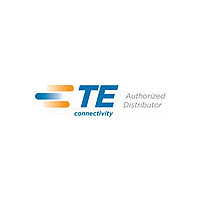201092-1 TE Connectivity, 201092-1 Datasheet - Page 7

201092-1
Manufacturer Part Number
201092-1
Description
Manufacturer
TE Connectivity
Type
Screwr
Datasheet
1.201092-1.pdf
(95 pages)
Specifications of 201092-1
Product Length (mm)
20.62mm
Product Depth (mm)
4.67mm
Lead Free Status / RoHS Status
Not Compliant
Available stocks
Company
Part Number
Manufacturer
Quantity
Price
Company:
Part Number:
201092-1
Manufacturer:
TE
Quantity:
40 188
Company:
Part Number:
201092-1
Manufacturer:
TE
Quantity:
35 000
Current Rating Verification
Can a contact rated at 10 amps
carry 10 amps?
Maybe yes, but probably not.
The reason lies in the test con-
ditions used to rate the contact.
If these conditions do not ade-
quately reflect the application
conditions, the actual allowable
current levels may be lower
than specified levels. For exam-
ple, many manufacturers,
including Tyco, test a single
contact in air. This gives an
accurate measure of the basic
current-carrying capacity of the
contact. Use the contact alone
in air and it can certainly carry
10 amperes. Use it in a multi-
position connector surrounded
by other current-carrying con-
tacts or in high ambient
temperatures, and the contact
should carry less current.
Similarly, as the contact ages
and stress relaxation, environ-
mental cycling, and other
degradation factors take their
toll, the contact’s current-
carrying capacity decreases.
A prudent design must set
current levels for such end-of-
design-life (EODL) conditions.
The total current capacity of
each contact in a given con-
nector is dependent upon the
heat rise resulting from the
combination of electrical loads
of the contacts in the connector
arrangement and the maximum
ambient temperature in which
the connector will be operating.
Caution must be taken to
ensure that this combination of
conditions does not cause the
internal temperature of the con-
nector to exceed the maximum
operating temperature of the
housing material. Several vari-
ables which must be considered
when determining this maxi-
mum current capability for your
application are:
Dimensions are shown for reference
purposes only.
Wire Size—Larger wire will
carry more current since it
has less internal resistance
to current flow and generates
less heat. The wire also con-
ducts heat away from the
connector.
M Series
Pin and Socket Connectors
Practical current-carrying capac-
ity is not an absolute, but an
application-dependent condition.
New Method Simplifies Ratings
To help the designer set the
appropriate current level, Tyco
has developed a method of
specifying current-carrying
capacity. This method takes
into account the various appli-
cation factors that influence
current rating.
The method can be summarized
as follows:
Current Carrying Capabilities
Dimensions are in inches and mil-
limeters unless otherwise specified.
Values in brackets are metric equiva-
lents.
75
60
45
30
15
0
Connector Size—In general,
with more circuits in a con-
nector, less current per
contact can be carried.
The contact is aged to EODL
conditions by durability
cycling, thermal cycling, and
environmental exposure.
The contact’s resistance
stability is verified.
The current necessary to
p r oduce the specified tempera-
ture rise is measured. This
T-rise is usually 30°C.
A rating factor is determined
to allow derating of multiple
contacts in the same housing
and for different conductor
sizes.
CONTACT CURRENT GUIDE Maximum Current (Amperes)
60
56
50
45
Temperature
One other factor influencing
current levels is the maximum
operating temperature, for
example, 105°C. If the appli-
cation has a high ambient
temperature (over 75°C) the
contact’s T-rise is limited by
the maximum operating tem-
perature. For example, an
application temperature of
90°C limits the contact T-rise
to 15°C. Since current pro-
duces heat (the I
current must be lowered to
limit the T-rise.
A contact’s T-rise depends not
only on its I
also on its ability to dissipate
the heat. Consider a contact in
a multi-contact housing. Joule
heating in multiple contacts will
raise the local ambient temper-
ature. Since the contact will not
be able to dissipate its own
heat as well by convection, the
maximum T-rise will be realized
at a lower current level. Conse-
quently, the allowable current
level must be lower to maintain
an acceptable T-rise.
For a given connector, the
current level will be set by the
loading density. A connector
Specifications subject to change.
35
Current Load Distribution—
Spreading those lines with
greater current loads through-
out the connector, particularly
around the outer perimeter,
will enhance heat dissipation.
23
2
R Joule heating, but
13
2
R law), the
11.85
7.5
containing 50% current-carrying
contacts will permit higher
currents (per contact) than a
connector will at 75% loading.
The loading percentage assumes
an even distribution of contacts
within the housing. If all 10 con-
tacts are grouped together in
one section of a 20-position
connector, the loading density
may approach 100%.
The Importance of EODL
As stated, T-rise in a contact
depends on both resistance and
current. As it ages, a contact’s
resistance will increase. The
contact designer will specify a
maximum resistance for the
contact, this level is the end-of-
design-life resistance. Before
the contact is tested for current,
Tyco subjects it to a sequence
of tests that exercises the major
failure mechanisms and thereby
simulates EODL conditions.
Conditioning includes mating
cycling, industrial mixed-flowing
gases, humidity and tempera-
ture cycling, and vibration to
sequentially introduce wear,
corrosion, stress relaxation,
and mechanical disturbance.
Technical Support Center
1-800-522-6752
www.tycoelectronics.com
Ambient Temperature—With
higher ambient temperatures,
less current can be carried.
Type XII Upgrade
Size 8 Upgrade
.125 POWERBAND
Contact
Size 8
Type XII
Type I, Type II/III +
Upgrade
Type III + , Type II,
Type III + Posted
Size 20 Upgrade
20 DF
Catalog 82003
Revised 3-01
7
























